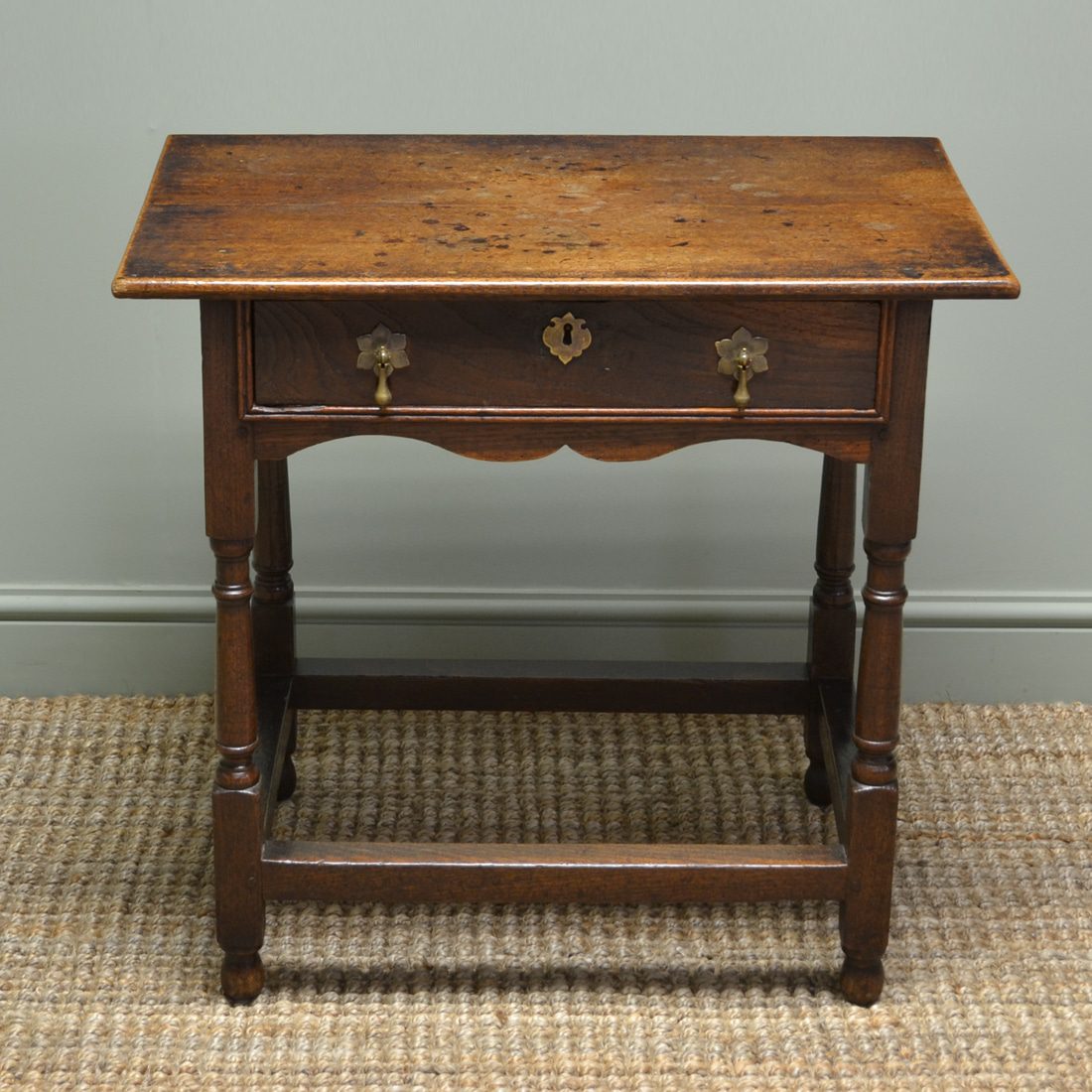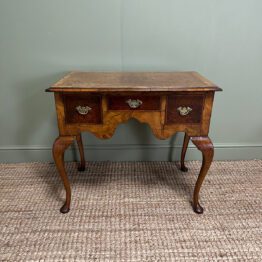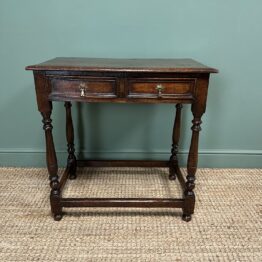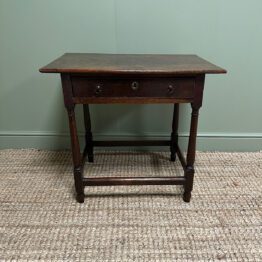The antique Lowboy was an 18th century piece of period furniture originally used as a dressing table but now used as a good country side table. The antique Lowboy originally got its name as it is basically a low, small antique table. They were usually in English oak but occasionally you can see them in Fruit-Wood or Walnut with one or two drawers on the front and solid brass decorative handles. The earliest examples from the Queen Anne period would have been standing on elegant cabriole legs and made from Walnut or with spectacular figured Oyster veneers. The Georgian period produced more simple country designs with turned legs. They usually come with lots of lovely charm and character and will display a real sense of history showing a beautiful patina. They are made of sound period peg construction and would look wonderful in a hall or living space. Many of these designs were reproduced in the late Victorian and Edwardian eras in Mahogany timbers. These would come with Chippendale influences like blind fretwork carvings and more intricate decorative handles. Have a look below at our lovely examples of antique lowboys for sale.
Antique Lowboy for sale
-
 Stunning Edwardian Antique Walnut Low Boy£795.00
Stunning Edwardian Antique Walnut Low Boy£795.00 -
 Country House Period Oak Georgian Low Boy / Side Table£695.00
Country House Period Oak Georgian Low Boy / Side Table£695.00 -
 Stunning Edwardian Walnut Antique Low Boy / Writing Table£795.00
Stunning Edwardian Walnut Antique Low Boy / Writing Table£795.00 -
 Stunning 18th Century Georgian Oak Antique Low Boy£0.00
Stunning 18th Century Georgian Oak Antique Low Boy£0.00 -
 19th Century Period Antique Oak Side Table£0.00
19th Century Period Antique Oak Side Table£0.00 -
 Period Country House Antique Oak Low Boy / Side Table£0.00
Period Country House Antique Oak Low Boy / Side Table£0.00
Styles of Antique Lowboys
This is an unusual 18th Century antique Low Boy with stunning quarter veneered Walnut. The drawer has pear shaped brass handles and it stands on Cabriole legs with pad feet.

This 18th century Oak Low boy dates from the Early to Mid Georgian period ca. 1750. It is a real characterful piece with decorative brass handles, turned legs with cross stretcher. It is a good period piece and is of early pegged construction.
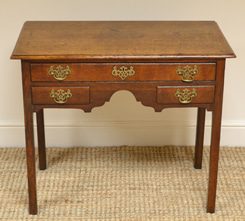
This example is from the early 19th Century and comes with unusual drawer configuration along with Inlay chequer banding.


